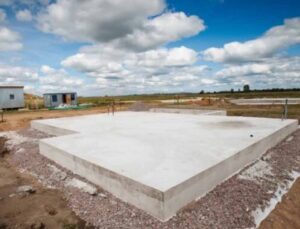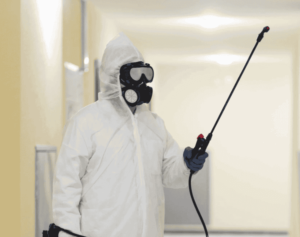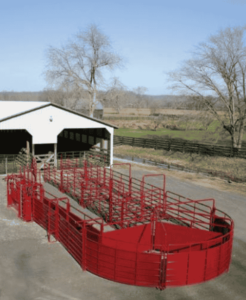Special Education, otherwise known as (Special Needs Education), entails providing a specific learning environment for physically, mentally and socially challenged kids.
Table of Contents
Special Education, otherwise known as (Special Needs Education), entails providing a specific learning environment for physically, mentally and socially challenged kids.
More specifically, such specialised educational settings focus on kids having indifferent emotional behaviour or disabilities in learning, hearing, vision, and cognisance.
Such environments also look after the educational requirements of children having neurological and orthopaedic impairments, along with kids having superior academic abilities.
The means of delivering Special education to these children became a universal practice in several developing countries in the late 20th century.
It emphasised two primary concepts – Intraindividual differences and Interindividual differentiations.
- Interindividual differentiations denote comparing one kid with another.
- Intraindividual differentiations denote comparing one kid’s abilities in one area to another kid in other focussed areas.
While their interindividual differentiations determine the grouping of kids in specialised classes, the overall assessment is established through their intraindividual dissimilarities in kids’ abilities and weaknesses.
In many ways, these unique education environments are also where students who have Autism can get quality school time.
Historically, students needing special attention were repeatedly excluded from general education environments. And although we’d like to believe things have improved, in truth, even today, approximately 25 million kids with disabilities in poor/underdeveloped countries globally are excluded from getting the proper education.
Ways Of Identifying Kids Needing Special Education Requirements
Some kids can be easily identified from their medical records.
For instance, if a kid’s medical report shows they’ve been diagnosed with a genetic condition known to cause brain damage or a developmental disorder. Kids with a medical history of being diagnosed with hearing disabilities, visual impairment, speaking disabilities or any other are also easily identified.
In contrast to these kids, those children with less identifiable (or obvious) conditions like borderline intelligence disability, dyscalculia or dyslexia are recognised through two specific methods. They are the Discrepancy model and the Interventional model response.
In the Discrepancy model, the child with an SLD or Specific Learning Disability gets specialised attention and care towards their learning and education. Such children typically demonstrate less intelligence and sub-par academic achievements through their intelligence quotient. And by closely monitoring their performance over time, teachers can meet their special learning needs in a congenial education environment.
Alternatively, the Interventional model response recognises children facing troubles in their 1st or 2nd year at school. In such cases, those kids get special help, such as associating with a reading remediation program. Depending on children’s response to the reading remediation program, it is determined if they harbour any learning impairment.
Using both these modes of identifying students, a unique education school environment must customise its surroundings to suit the needs of such special students.
Respective tutors must provide various degrees of support and care to such unique kids depending on their requirements. It is the only way to ensure these kids get the help they deserve and excel in academics and other preferred activities like normal kids.
Adapting Classroom Environments for Kids with Special Needs & Requirements
Kids with learning, social or physical impairments will always need special help and attention from their classroom tutors.
But besides meeting their special needs, they must also feel comfortable in their learning environment.
The more they feel comfortable with their educational surrounding, the more they’ll willingly participate in classroom activities.
Here Are Some Tips to Adapt to Classroom Environment for Unique Kids Having Special Needs and Requirements.
- You can arrange alternative desk arrangements to make them sit next to you or a classmate with similar impairments. That way, you can watch them, monitor their progress and even tend to their unique learning needs whenever needed. You can also arrange a quiet sitting area in class to reduce their nervousness and shyness and help them concentrate on their classroom learning.
K’ motion stools are also something you can add to the classroom for these kids needing special care and attention. In short, whatever makes these kids comfortable and focused in their studies must be integrated into the classroom environment.
- Kids with special needs need space to move around quickly inside a classroom. If the learning environment is too cluttered, they may feel uncomfortable doing what they want.
Another good idea is to reorganise the classroom layout and make sufficient space for these unique kids to move around and feel at ease. It would also make these special kids happy and allow them to showcase their true potential in an adaptive special classroom education environment.
- Kids with Attention-deficit/hyperactivity disorder (ADHD) or with Autism are often distracted easily by sharp visual clutter on walls. So, keeping this in mind, you must remove existing visual clutter on walls to ensure these special kids wholeheartedly focus on their academic learning.
- Children with hearing disabilities often lose focus in their learning when the noise level in the classroom is high. It also makes them rattled and utterly uncomfortable.
So, to ensure they don’t feel uncomfortable, lessen the noise levels in the classroom environment. Moreover, you can play soft, soothing music to ensure white noise throughout the day and resultantly deliver sensory stimulation to these special children.
- Kids with Autism or visual impairment can struggle with bright or constantly flickering lights inside classrooms. It is a major hindrance to their academic progress and makes them uneasy.
Keeping this in mind, you must adjust the classroom lights and remove dimming lights to make things more comfortable for such special students.
- To tend to the needs of physically challenged kids or with orthopaedic disabilities, you can lower the chairs or study desks and add slant boards throughout the classroom. Doing so will give them the writing support and comfort to learn adequately in an adaptive classroom learning environment.
- Also, for kids suffering from orthopaedic, cognitive or developmental delay disorders, you can use pegs for adapting door handles, bag areas, coat racks, shelves and even puzzles.
Final Thoughts
Modifying the classroom per these unique kids’ special needs and requirements can prove helpful in their overall academic learning. However, the change must be done keeping in mind the needs, comforts and learning objectives of such special children.
With such customised changes, these special kids will show more involvement in classroom learning and other activities than ever before.
Getting necessary support and mentoring is crucial for every child- be it one with disabilities or those struggling with their subject assignments/homework tasks.
While Special Education Environment tends to the needs of the former, online assignment help platforms to come to their rescue of students needing subject assignment tutoring. These platforms offer assistance in several subjects like finance assignment help, Mathematics assignment help, Statistics assignment help and so on.
They will present you with customised assignment mentoring and guidance whenever you need them and ensure your submitted papers fetch you an A+ grade.





More Stories
What Is a Youth Opportunity Center? Programs, Benefits, and How They Empower Young People
Top 7 Ways to Learn French Online from Home in Paris
What Makes a Centre of Excellence Work? A Friendly Guide to OPD and System Health Checks